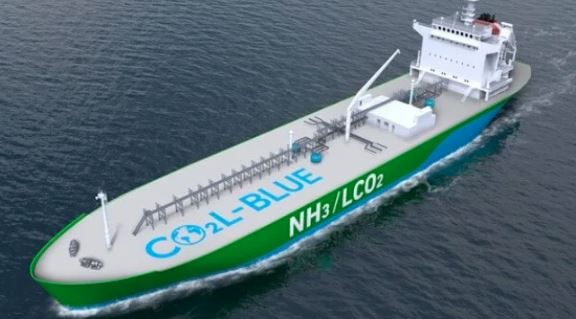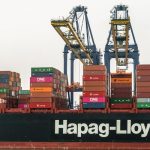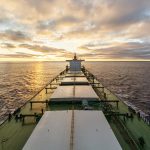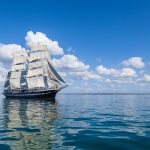Japan’s Mitsubishi Shipbuilding is the latest in a series of shipbuilders and design groups to complete conceptual designs for a vessel to capture a portion of the emerging markets for new forms of gas transport. The Japanese shipbuilder reports that it has a concept to combine two of the potentially most lucrative emerging specialized markets in the near future for the transport of ammonia and liquified CO2.
Requiring specialized means of transport and unique designs to address the challenges, ammonia and LCO2 are seen as having the potential to be two of the strongest markets emerging in the next few years. Ammonia as a means of transporting hydrogen is seen as an emerging stably source of clean energy but requires unique handling to address safety and its highly corrosive properties. At the same time, CO2 capture, storage, and reuse is attracting attention in the decarbonization lifecycle. Mitsubishi Heavy Industries estimates that the transportation volume of CO2 due to CCUS will amount to between 4.3 to 13.0 billion tonnes annually by 2050.
Working with Mitsui O.S.K. Lines, the companies conducted extensive studies seeking to provide the basis for a type of vessel with the potential to become mainstream in the LCO2 carrier market. Their concept seeks to combine LCO2 transport and ammonia to provide flexibility meeting the projected increase in demand for transporting the two products and enhancing the economics for building and operating the vessel.
The companies highlight that those carriers tailored to the specific requirements of unique products such as ammonia or LCO2 normally run empty on their return voyage. Their conceptual design is for a vessel capable of transporting either ammonia and LCO2. Developed through this study, the design calls for carrying ammonia on the outward journey and LCO2 on the return trip. As such, a ship able to handle both substances the companies believe will increase operational efficiency, and contribute to enhanced transport efficiency overall
Mitsubishi Shipbuilding reports it will continue to further develop the technology based on the knowledge acquired and technical issues encountered during this project. Working in cooperation with marine-related corporations and petroleum development corporations, the aim is to commercialize the vessel.
Based on the potential for these value chains, Mitsubishi Shipbuilding reports it will continue to develop various types of ships based on this design in order to respond flexibly to customer needs. The company looks to develop and commercialize LCO2 carriers supporting the development of the CCUS value chain and become a leader in the emerging segments related to decarbonization.
Source: The Maritime Executive






